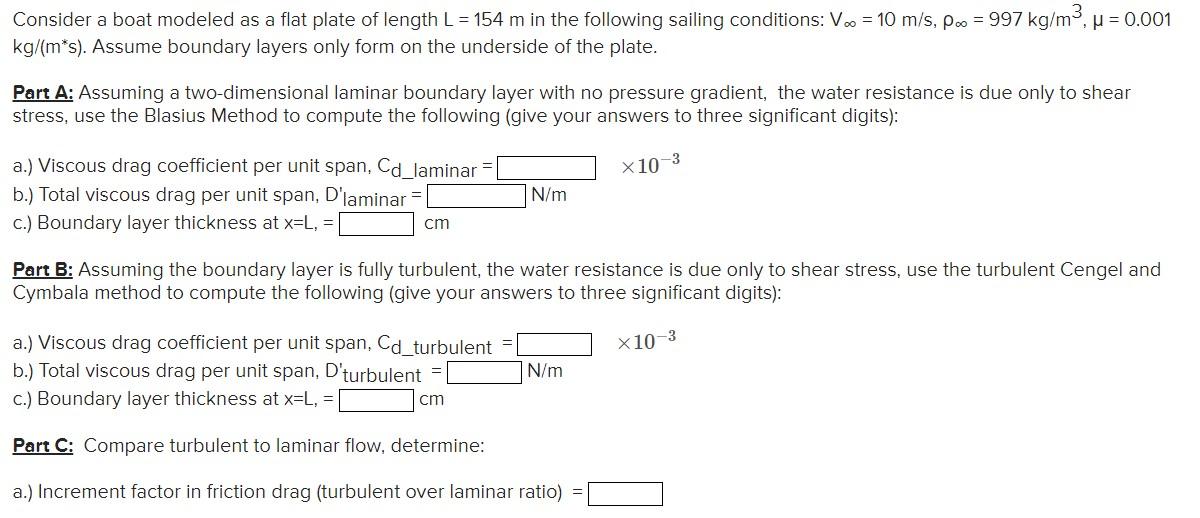Answered step by step
Verified Expert Solution
Question
1 Approved Answer
Consider a boat modeled as a flat plate of length L = 154 m in the following sailing conditions: V.. = 10 m/s, p

Consider a boat modeled as a flat plate of length L = 154 m in the following sailing conditions: V.. = 10 m/s, p = 997 kg/m, = 0.001 kg/(m*s). Assume boundary layers only form on the underside of the plate. Part A: Assuming a two-dimensional laminar boundary layer with no pressure gradient, the water resistance is due only to shear stress, use the Blasius Method to compute the following (give your answers to three significant digits): a.) Viscous drag coefficient per unit span, Cd_laminar b.) Total viscous drag per unit span, D'laminar c.) Boundary layer thickness at x=L, = [ cm N/m Part B: Assuming the boundary layer is fully turbulent, the water resistance is due only to shear stress, use the turbulent Cengel and Cymbala method to compute the following (give your answers to three significant digits): a.) Viscous drag coefficient per unit span, Cd_turbulent b.) Total viscous drag per unit span, D'turbulent = c.) Boundary layer thickness at x=L, = cm Part C: Compare turbulent to laminar flow, determine: a.) Increment factor in friction drag (turbulent over laminar ratio) X10-3 N/m X10-3
Step by Step Solution
★★★★★
3.46 Rating (156 Votes )
There are 3 Steps involved in it
Step: 1

Get Instant Access to Expert-Tailored Solutions
See step-by-step solutions with expert insights and AI powered tools for academic success
Step: 2

Step: 3

Ace Your Homework with AI
Get the answers you need in no time with our AI-driven, step-by-step assistance
Get Started


